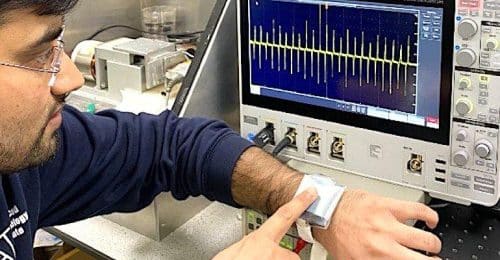Scientists at the University of Surrey have developed a wrist device that runs on energy harvested from the wearer’s movements and is fashioned out of discarded paper wipes and plastic cups.
Researchers from the University of Surrey have developed a method for transmitting Morse code using discarded paper wipes and plastic cups. This device is powered by the movements of the person wearing it. This innovative self-powered device, which is created from common, recyclable components, is opening the door for more environmentally friendly technology in smartwatches and other IoT devices.
According to Bhaskar Dudem, project lead and research fellow at the University of Surrey’s Advanced Technology Institute (ATI), this reuse of materials could solve some of the ecological issues associated with the material waste caused by the myriad electronic devices that have become part of our daily lives.

“It won’t be long until we have to ask ourselves which of the items we own are not connected to the internet,” he said in a press statement. “However, the current internet-of-things (IoT) revolution highlights the simple fact that our planet doesn’t have the raw resources to continue to make these devices which are in such high demand.”
The device’s development, which employs triboelectric nanogenerators (TENGs) to harvest energy, demonstrates that future wearables can be more environmentally friendly. “Our research demonstrates that there is a path to creating sustainable technology that runs on electricity powered by us, the users of that technology,” he said in a press statement.
TENGs take advantage of static electricity, which is created when two materials rub against each other and form an electric charge, a process known as electrostatic induction. According to the researchers, the Morse code transmitted by the gadget is deciphered using a customised LabVIEW application to read the transmitted signal.
They also constructed a nine-segment keyboard by connecting nine TENGs to an Arduino controller, which displays the nine-segment actuation on a computer screen. They believe the method can be applied to future self-powered sensors and IoT systems.







